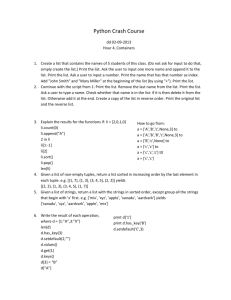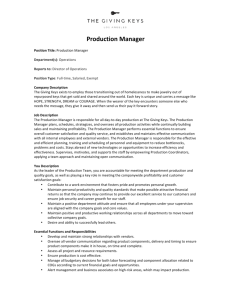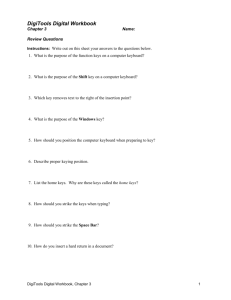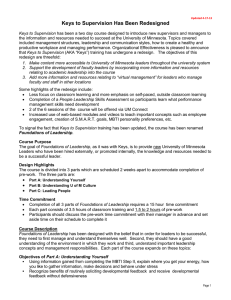Dictionaries - The University of Texas at Arlington
advertisement
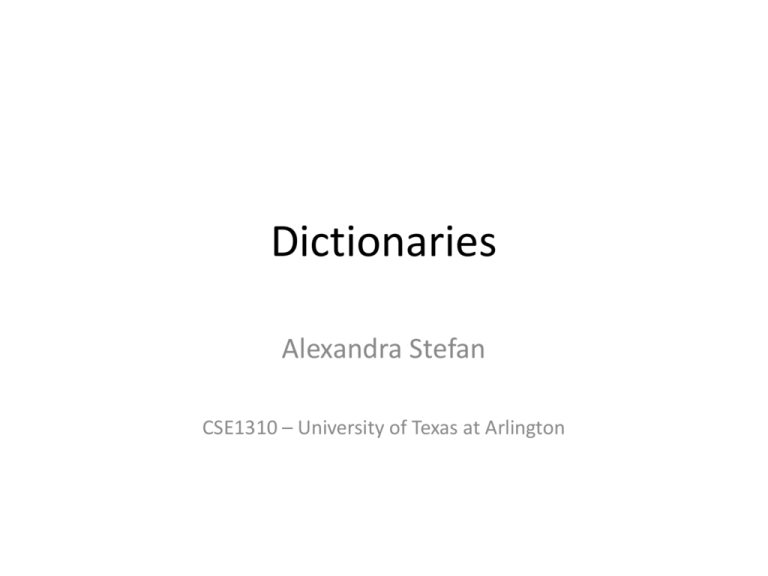
Dictionaries
Alexandra Stefan
CSE1310 – University of Texas at Arlington
Dictionary
• A sequence of key-value pairs:
{key:value, key:value,… key: value}
• Optimized for efficient search based on the key
• May not always print the elements in the same
order
– As you make modifications (insert/delete elements)
the order of the pairs may change to enable fast
searching
Legal Keys
• No duplicate keys
– Cannot have multiple entries for a key
• Keys must be immutable types
– Strings
– Integers
– Tuples
• Mix and match is okay
Slide by Chris Conly
Working with dictionaries
• {key:value, key:value,… key: value}
• What operations would you like? What
operations do you know from the other
collections?
Working with dictionaries
•
•
•
•
They are mutable
Shallow copies
d = {key:value, key:value,… key: value}
Functions:
– d[new_key] = new_value
– del d[key]
– d.items(), d.keys(), d.values()
• list(d.keys()), sorted(d.keys())
– len(d) : number of key-value pairs
– in: verifies that a key is in the dictionary
– min(__), max(__)
keys(), values(), items()
• They are called view objects
• They reflect changes made to the dictionary
– If you add or delete items in the dictionary, the views will reflect
that
• “If keys, values and items views are iterated over with no
intervening modifications to the dictionary, the order of
items will directly correspond.” – Python Standard Library
• To get a list of them use the list constructor:
– list(d.keys()), list(d.values()),
list(d.items())
– How connected are the lists and the views they are based on?
• d = {1:[1,2]}, lv = list(d.values()),
d[1][0] = 10, d, lv, lv[0][1] = 200, lv, d
![Handout 4 – Dictionaries and Web Indexer Part 1 […] table](http://s2.studylib.net/store/data/013505323_1-2d69e64adf184f9c6f1c2d2d8fdbba91-300x300.png)

